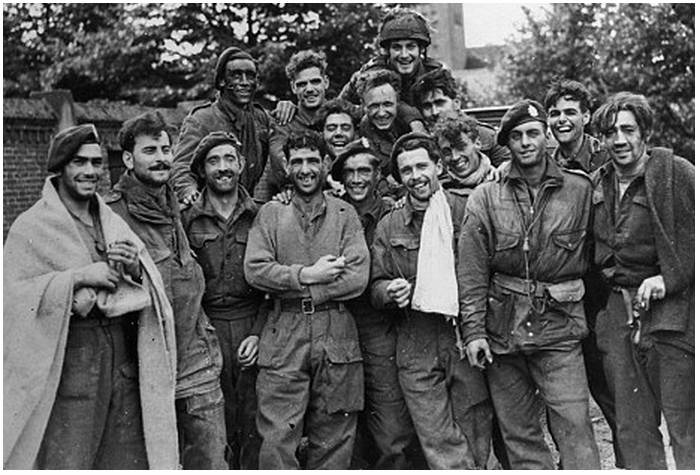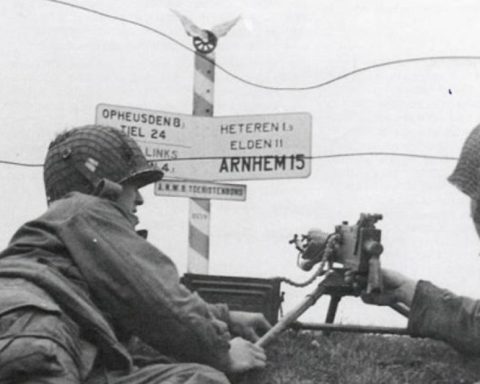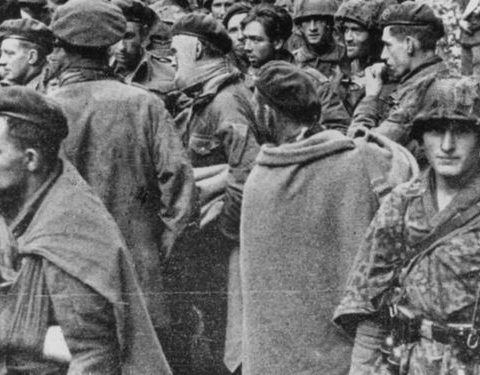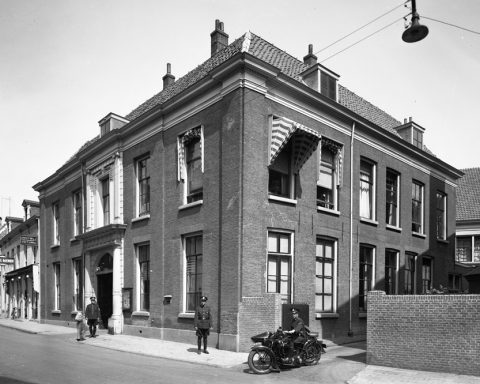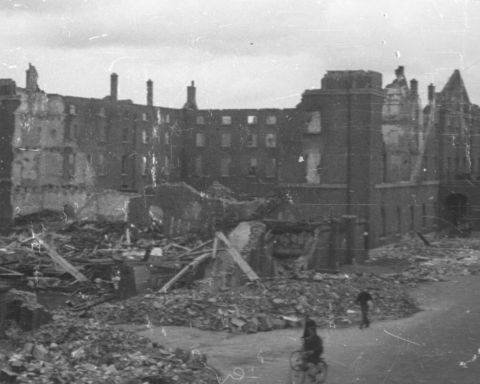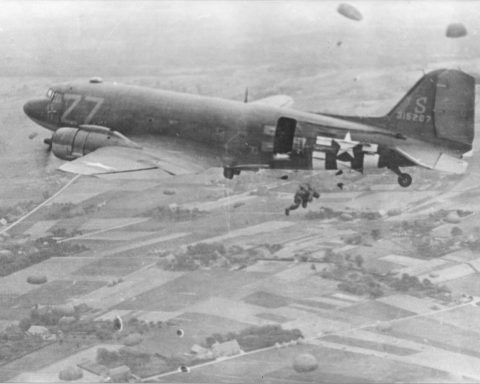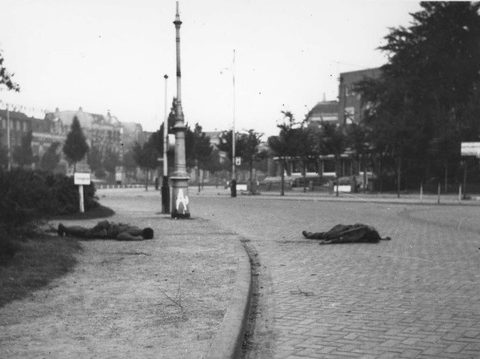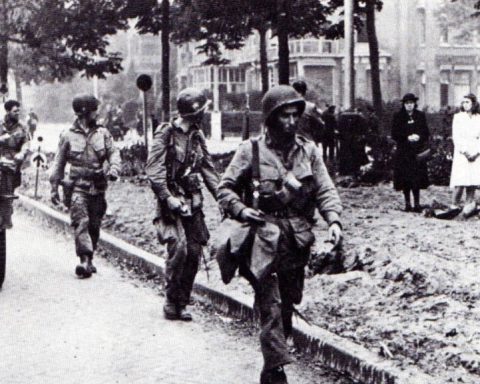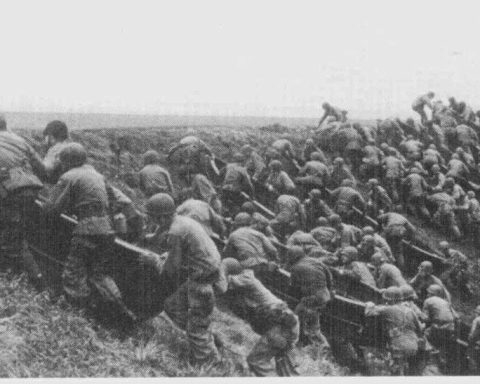More than 2,000 British soldiers were ferried across the Rhine in boats during the night of September 25 to 26. General Roy Urquhart reached Driel during the night. In Driel he went looking for General Boy Browning, his commander.
But Browning was still at his headquarters in Nijmegen. The fact that he had not come to Driel did not endear him to the officers of the British Airborne Division. Urquhart was picked up in Driel by Harry Cator, Browning’s adjutant. They drove to Nijmegen in the dark in the pouring rain.
Urquhart: “When we got there, I was completely soaked. I felt exhausted and was even too tired to sit down.”
As Urquhart waited for Browning to arrive, he noticed a framed photo of a German general hanging on the wall. The photo was hanging a little crooked and the glass was broken. The adjutant explained that Browning had thrown an inkwell at them that week to express his feelings.
Browning reported moments later, dressed immaculately in uniform. “It was as if he had come from a parade, rather than being in the middle of a battle,” Urquhart noted.
Urquhart told Browning that the remnants of the Airborne Division had now almost been evacuated from Oosterbeek.
“I’m sorry we didn’t achieve what we were told to do.”
From Driel, the British airborne soldiers were brought to Nijmegen by trucks.
“We didn’t say a word along the way,” said Colonel Charles Mackenzie. “There wasn’t much to say either.”
Because there were insufficient trucks to take all the soldiers, hundreds of soldiers had to walk to Nijmegen.
Survivors
The airborne soldiers were accommodated in three schools in Nijmegen to recover their case. They were given food, the inevitable English tea and a bed to sleep in. Some soldiers slept for two days in a row.
Now that the soldiers came together again in large numbers for the first time, the soldiers only realized how many victims had fallen.
“Where is the 1st Battalion?” a soldier had asked. A corporal had pointed to the handful of men standing behind him.
“This is all that’s left.”
Of General Shan Hackett’s 4th Parachute Brigade, 9 officers and 260 soldiers remained. Originally the brigade had consisted of 2,000 soldiers.
Later that week, the airborne soldiers who had survived the Battle of Arnhem were flown back to Britain. The British Airborne Division did not see action again during the war.
The patched-up division was deployed to Norway after the capitulation of Nazi Germany to monitor the German surrender.

